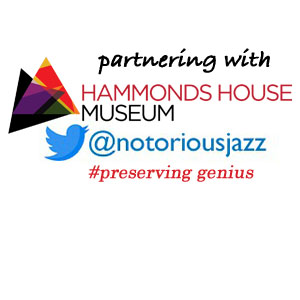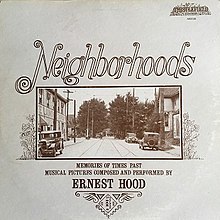
Daily Dose Of Jazz…
Ernest Hood was born on June 2, 1923 in Portland, Oregon. During the 1940s he was a jazz guitarist in the Portland, Oregon area in the 1940s. He played with his brother Bill and saxophonist Charlie Barnet.
Hood contracted polio in the 1950s, which confined him to using a wheelchair for the rest of his life. No longer able to hold a guitar, he started playing the zither. He played zither on some of Flora Purim’s early albums.
His only studio album, Neighborhoods, was recorded and self~released in 1975 and is a work of ambient music that explores the soundscapes of Portland, Oregon suburbia through a collage of field recordings layered with Hood’s zither and synthesizer melodies. Only one thousand copies were pressed during its original production run. After remaining in obscurity for over 40 years, it was reissued by Freedom to Spend in 2019.
Hood, who often went by Ern or Ernie, was a major figure in Portland’s music scene. He helped found KBOO, a nonprofit FM radio station that still exists today in the city. The radio show he hosted, Radio Days, on KBOO and KOAP, aimed for the same kind of audience his record Neighborhoods did, one that wanted to relive the serenity of the past.
He was also involved in launching the city’s first jazz club, The Way Out. Avant~garde zither and keyboardist, and radio host Ernest Hood, passed away in 1995.
More Posts: bandleader,club owner,history,instrumental,jazz,keyboards,music,radio host,zither
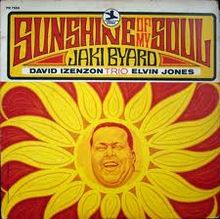
Daily Dose Of Jazz…
David Izenzon was born on May 17, 1932 in Pittsburgh, Pennsylvania. Graduating from the Carnegie Institute of Technology, he later received a master’s degree from the Manhattan School of Music.
Izenzon began playing double bass at the age of twenty-four and played in his hometown before moving to New York City in 1961. There he played with Paul Bley, Archie Shepp, Sonny Rollins, and Bill Dixon, but he is best known for his association with Ornette Coleman, which began in October 1961. He played in Coleman’s 1962 Town Hall concert and played with him frequently from 1965 to 1968, often in a trio format with Charles Moffett.
During this time Izenzon also recorded with Harold McNair and Yoko Ono. He taught music history at Bronx Community College from 1968 to 1971 and played with Perry Robinson and Paul Motian, but reduced his time in music in 1972 when his son became ill. In 1973 Izenzon received a Ph.D. in psychotherapy from Northwestern University. The following year, he co-founded Potsmokers Anonymous with his wife, Pearl.
In 1975 he composed a jazz opera titled How Music Can Save The World, dedicated to those who helped his son recover. From 1977 he worked again with Coleman and Motian up until his death. Double bassist David Izenzon passed away on October 8, 1979 of a heart attack, arriving dead on arrival at Bellevue Hospital in New York City.
More Posts: bass,history,instrumental,jazz,music
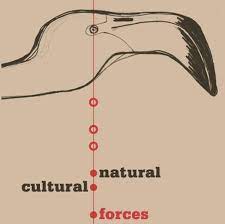
Daily Dose Of Jazz…
Warren Smith was born on May 14, 1934 in Chicago, Illinois, to a musical family. His father played saxophone and clarinet with Noble Sissle and Jimmie Noone, and his mother was a harpist and pianist. At the age of four he studied clarinet with his father. He graduated from the University of Illinois in 1957, then received a master’s degree in percussion from the Manhattan School of Music in 1958.
One of his earliest major recording dates was with Miles Davis as a vibraphonist in 1957. In 1958 Warren found work in Broadway pit bands and also played with Gil Evans. In 1961 he co-founded the Composers Workshop Ensemble. In the 1960s Smith accompanied Aretha Franklin, Nina Simone, Lloyd Price, and Nat King Cole; he worked with Sam Rivers from 1964–76 and with Gil Evans again from 1968 to 1976.
In 1969 he played with Janis Joplin and in 1971 with King Curtis and Tony Williams. He was also a founding member of Max Roach’s percussion ensemble, M’Boom, in 1970.
In the 1970s and 1980s Smith had a loft called Studio Wis that acted as a performing and recording space for many young New York jazz musicians, such as Wadada Leo Smith and Oliver Lake. Through the 1970s Smith played with Andrew White, Julius Hemphill, Muhal Richard Abrams, Nancy Wilson, Quincy Jones, Count Basie, and Carmen McRae. Other credits include extensive work with rock and pop musicians and time spent with Anthony Braxton, Charles Mingus, Henry Threadgill, Van Morrison, and Joe Zawinul.
He continued to work on Broadway well into the 1990s, and has performed with a number of classical ensembles. Smith taught in the New York City public school system from 1958 to 1968, at Third Street Settlement from 1960 to 1967, at Adelphi University in 1970–71, and at SUNY-Old Westbury from 1971. He remains connected to the music at 87.
More Posts: bandleader,history,instrumental,jazz,music,percussion
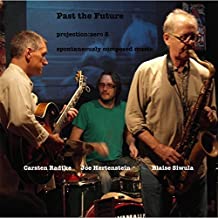
Daily Dose Of Jazz…
Blaise Siwula was born in Detroit, Michigan on February 19, 1950. Growing up in a working/middle-class black neighborhood. His next-door neighbor practiced saxophone in the afternoon and occasionally allowed him inside to watch him play. He began studying the alto sax at the age of 14, playing in the middle school concert band.
Hearing the John Coltrane album Om in 1969 compelled him to take up the tenor saxophone. He was also influenced by hearing Art Pepper in San Francisco, as well as Ornette Coleman, Sonny Stitt, Archie Shepp, Pharoah Sanders, Sun Ra, Blue Mitchell, Elvin Jones, and Miles Davis in live performances in Detroit in the 1970s. Cecil Taylor’s recordings with Jimmy Lyons were inspirational in a later period along with Ravi Shankar and the Detroit Symphony Orchestra in the Seventies.
At college on and off for an extended period from 1968 to 1980, he studied theory and composition at Wayne State University, and earned a BFA. His first personal encounter with jazz musicians came around 1971 while living in a hotel near the downtown campus like drummer Doc Watson. Moving to San Francisco, he started playing free improvised music in coffeehouses and writing poetry. After four years in Northern California, he returned to Detroit before heading for Europe in 1989. Working and traveling as a street musician for three months, then returning to the States and settling in New York City.
After periodic explorations of drama, poetry, architecture, and visual art, and quite unable to secure a recording contract initially, he recorded independently produced cassette tapes. He played with Amica Bunker, the Improvisers Collective, and the Citizens Ontological Music Agenda (COMA) series.
During the decade of the 2000s, Blaise composed music scores, played a number of saxophones, clarinets, flutes, percussion and string instruments, and computer-altered sound files as background for improvisation. His many collaborators have included Doug Walker’s Alien Planetscapes, Cecil Taylor’s Ptonagas, William Hooker’s ensembles, Judy Dunaway’s Balloon Trio, Dialing Privileges with Dom Minasi and John Bollinger, Ken Simon, Karen Borca, Jackson Krall, Tatsuya Nakatani, and William Parker, among others.
Avant-garde alto saxophonist, composer and bandleader Blaise Siwula, who has been a part of New York City’s underground jazz scene, continues to performa and record.
More Posts: clarinets,flutes,percussion,saxophones,strings
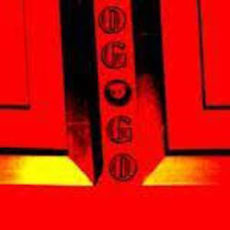
Daily Dose Of Jazz…
Igor Grigoriev was born on January 24, 1955 in Moscow, Russia and taught himself to play the guitar as a young child, and later obtained his master’s degree from a music institution in Russia. As a young boy in the late sixties, he was interested in the latest music of the time, rock and started his career, gaining fame by playing and touring around the world.
Becoming a band leader of the trio, Roof, with trumpeter Andrew Solovyov, and percussionist Michael Zhukov they recorded on Melodia Records and Leo Records. His group, Asphalt also gained tremendous popularity despite its short life span.
As he developed musically, Grigoriev became interested in Charlie Parker’s work, but in later years the influence of classical composers became evident in his music. Permanently migrating to the United States in 1989 he continued his career, as a classical and jazz musician, but later he became more and more interested in Avant-garde music.
Better known for his 1990s work, he rapidly assimilated the American avant-garde and forged his own, instantly identifiable style. His music of the 1970s and 1980s saw transition from rock to classical to jazz and to avant-garde music. Igor developed methods of simultaneously improvising bass lines, harmony and melodic lines. In his later years, his playing became less predictable and formulaic.
He has recorded a number of solo albums, as well as recording or performing with Stan Getz, Red Callender, Larry Gales, Milcho Leviev, Ira Schulman, Rod Oakes, and many others. Igor and Rod founded OGOGO in 1996, which is one of the most important organizations to perform improvised music. His central focus was free improvisation, though he occasionally appeared in more conventional jazz and classical contexts, such as big band, various ensembles, and string orchestra.
He composed and arranged for a wide range of music genres, did orchestra work for a Russian circus, and arranged music for theatrical plays. As an educator he taught guitar, music history, jazz history, ensembles, and improvisation at Los Angeles Harbor College and Cerritos College in Los Angeles, California. Guitarist, composer, arranger, band leader and educator Igor Grigoriev passed away on September 25, 2010.
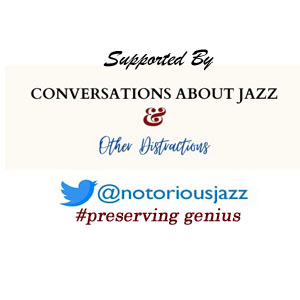
More Posts: arranger,composer,guitar,history,instrumental,jazz,music


